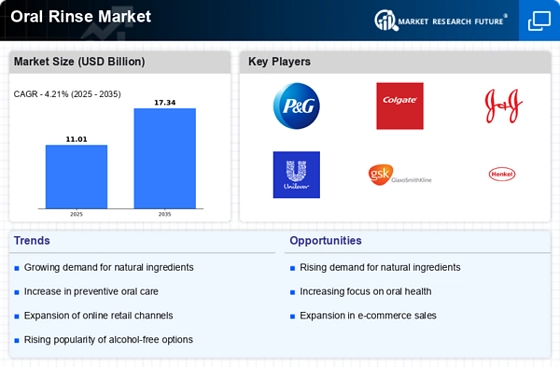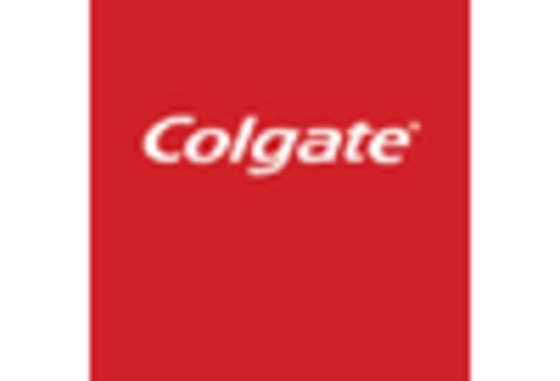Expansion of Retail Channels
The expansion of retail channels is playing a significant role in the growth of the Oral Rinse Market. With the proliferation of supermarkets, pharmacies, and online platforms, consumers have greater access to a variety of oral rinse products. This increased availability is likely to enhance consumer purchasing behavior, as individuals can easily find and compare different brands and formulations. Recent statistics indicate that e-commerce sales in the oral care sector have surged, contributing to a more competitive market landscape. As retail channels continue to diversify, the Oral Rinse Market is expected to benefit from heightened visibility and accessibility.
Innovations in Product Formulation
Innovations in product formulation are significantly influencing the Oral Rinse Market. Manufacturers are increasingly focusing on developing advanced formulations that cater to specific oral health needs, such as sensitivity, whitening, and antibacterial properties. The introduction of alcohol-free and natural ingredient-based rinses is particularly noteworthy, as consumers are gravitating towards safer and more effective options. This shift is supported by market data indicating that products with natural ingredients are gaining traction, with a notable increase in sales. As a result, the market is likely to expand as consumers seek out innovative solutions that align with their health-conscious lifestyles.
Increasing Awareness of Oral Hygiene
The rising awareness regarding oral hygiene is a pivotal driver for the Oral Rinse Market. Consumers are becoming increasingly educated about the importance of maintaining oral health, which includes regular use of oral rinses. This trend is reflected in the growing demand for products that promote fresh breath, reduce plaque, and prevent gum disease. According to recent data, the oral care segment, which includes oral rinses, is projected to witness a compound annual growth rate of approximately 4.5% over the next few years. This heightened awareness is likely to encourage consumers to invest in oral rinse products, thereby propelling the market forward.
Influence of Social Media and Marketing
The influence of social media and marketing strategies is a notable driver for the Oral Rinse Market. Brands are leveraging social media platforms to engage with consumers, promote their products, and educate them about the benefits of oral rinses. This digital marketing approach appears to resonate well with younger demographics, who are more likely to seek recommendations and reviews online. Data suggests that brands utilizing social media effectively can see a significant increase in brand awareness and sales. As marketing strategies evolve, the Oral Rinse Market is likely to experience growth driven by enhanced consumer engagement and targeted advertising.
Growing Demand for Preventive Dental Care
The growing demand for preventive dental care is a crucial driver for the Oral Rinse Market. As individuals become more proactive about their health, there is an increasing emphasis on preventive measures to avoid dental issues. Oral rinses are recognized for their role in preventing cavities, gingivitis, and other oral diseases. Market analysis suggests that the preventive dental care segment is expected to grow at a rate of 5% annually, reflecting a shift in consumer behavior towards maintaining oral health rather than merely treating problems. This trend is likely to bolster the demand for oral rinses as essential components of daily oral care routines.


















Leave a Comment